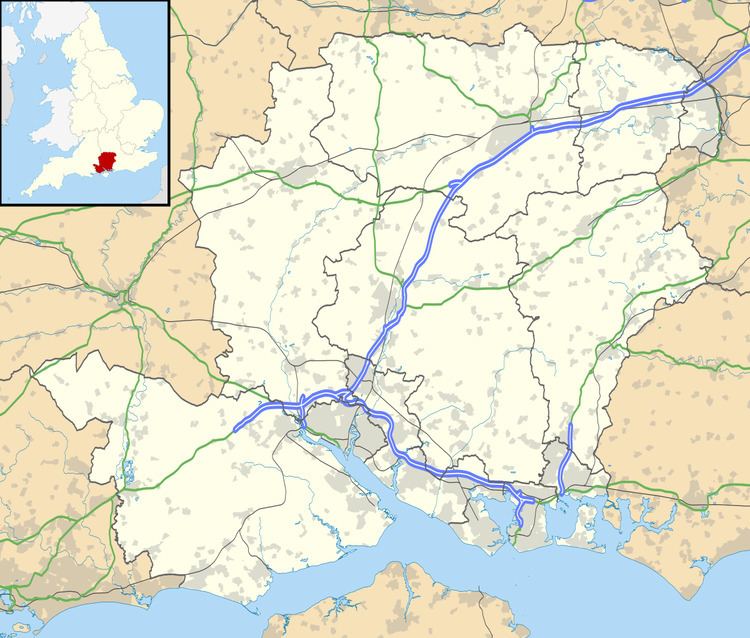Airport type Military Elevation AMSL 338 ft / 100 m Year built 1917 | In use 1917-1960 N/S 2,310 Owners Air Ministry, Admiralty | |
 | ||
Operator Royal Air ForceRoyal Navy Similar RNAS Hatston, Defence Fire Training, RAF Bassingbourn, RAF Boulmer, RAF Swanton Morley | ||
Slit trench remains raf worthy down ww2
RAF Worthy Down, was a Royal Air Force station built located 3.5 miles (5.6 km) north west of Winchester, Hampshire the airfield was also known as RNAS Worthy Down (HMS Kestrel) and HMS Ariel. The Royal Navy used the airfield from 1939 until 1942. Being completed in 1918, the airfield was first manned by No. 58 Squadron RAF. The airfield remained in use throughout the Second World War and was made into an engineering school in 1952. The airfield was in use until 1960. The station is now Worthy Down Barracks.
Contents
- Slit trench remains raf worthy down ww2
- History
- Royal Air Force
- Station commanders
- Royal Navy
- Current use
- References
History
The site was first used as a military establishment when the War Office acquired the site for a Wireless and Observers School in 1917 before changing to the school of Army Co-operation in 1918 on the site of the Winchester Racecourse. In 1918 an airfield was built for the Royal Flying Corps (RFC), but before it was completed the RFC was amalgamated with the Royal Naval Air Service to form the Royal Air Force. Nonetheless, the RFC do seem to have operated there to some degree prior to amalgamation, as Lieutenant Harold Percy Dawson, RFC, was killed in an air accident stated to be at Worthy Down on the 9th March 1918.
Royal Air Force
The first squadron to use the airfield was No. 58 Squadron RAF which was reformed there on 1 April 1924. The squadron flew the Vimy and the Virginia before moving to RAF Upper Heyford on 13 January 1936. On 7 April 1927 No. 7 Squadron RAF moved from RAF Bircham Newton and stayed until 3 September 1936 flying the Virginia IX/X and the Heyford II/III before moving to RAF Finningley. During this No. 102 Squadron RAF formed at the airfield flying the Heyford II/III on 1 October 1935 before leaving on 3 September 1936 moving to RAF Finningley. On 1 October 1939 the same day as when 102 Sqn formed No. 215 Squadron RAF also reformed at the airfield but they flew the Virginia X instead and left on 14 March 1936 moving to RAF Upper Heyford.
On 8 August 1936 No. 49 Squadron RAF moved from RAF Bircham Newton flying the Hawker Hind before leaving on 14 March 1938 moving to RAF Scampton. The next squadron to join was No. 35 Squadron RAF. The squadron moved to RAF Worth Down on 26 August 1936 flying the Fairey Gordon, Vickers Wellesley and the Fairey Battle before moving to RAF Cottesmore on 20 April 1938. The last squadron to join RAF Worthy Down was No. 207 Squadron RAF which had moved to the airfield on 29 August 1936 flying the Gordon and Wellesley before leaving on 20 April 1938 to RAF Cottesmore.
The only Royal Air Squadron not to use the airfield when it was under RAF control was the Southampton University Air Squadron which joined in 1945 flying the Tiger Moth before leaving during 1946.
Station commanders
Royal Navy
The site was recommissioned by the Royal Navy in 1939 as HMS Kestrel and used as a flying station by the Fleet Air Arm. During this time the site was featured on the news when Lord Haw-Haw (William Joyce) claimed HMS Kestrel was sunk by the Kriegsmarine. In 1950 it was placed in a state of care and maintenance until 1952 when it was re-established as HMS Ariel II and used as an engineering training school.
The following squadrons were based at Worthy Down at some point:
Additionally Supermarine used the airfield in the development of the Spitfire from December 1940 to March 1944.
Current use
The technical site is now Worthy Down Barracks with the runway area open grassland.
